 VANCOUVER — Canfor Corporation announced that its 77%-owned subsidiary, Vida AB, has completed the acquisition of AB Karl Hedin Sågverk. The transaction, announced on July 22, 2025, adds approximately 230 million board feet to Vida’s annual production capacity, bringing its total annual production capacity to approximately 2.1 billion board feet. “We are excited to welcome the employees at AB Karl Hedin Sagverk’s three sawmills in Karbenning, Krylbo and Sater into the Canfor family,” said Susan Yurkovich, President and CEO of Canfor. “This acquisition strengthens Vida’s geographic footprint, increasing access to high-quality timber resources in Sweden, while continuing to diversify Cantor’s operations globally.”
VANCOUVER — Canfor Corporation announced that its 77%-owned subsidiary, Vida AB, has completed the acquisition of AB Karl Hedin Sågverk. The transaction, announced on July 22, 2025, adds approximately 230 million board feet to Vida’s annual production capacity, bringing its total annual production capacity to approximately 2.1 billion board feet. “We are excited to welcome the employees at AB Karl Hedin Sagverk’s three sawmills in Karbenning, Krylbo and Sater into the Canfor family,” said Susan Yurkovich, President and CEO of Canfor. “This acquisition strengthens Vida’s geographic footprint, increasing access to high-quality timber resources in Sweden, while continuing to diversify Cantor’s operations globally.”

 Donald Trump has called on the European Union to hit China and India with tariffs of up to 100% to force Russian president Vladimir Putin to end the war in Ukraine. The US president made the demand during a meeting between US and EU officials discussing options to increase economic pressure on Russia. …Last month, the US imposed a 50% tariff on goods from India, which included a 25% penalty for its transactions with Russia. Although the EU has said it would end its dependency on Russian energy, around 19% of its natural gas imports still come from there. If the EU does impose the tariffs on China and India it would mark a change to its approach of attempting to isolate Russia with sanctions rather than levies.
Donald Trump has called on the European Union to hit China and India with tariffs of up to 100% to force Russian president Vladimir Putin to end the war in Ukraine. The US president made the demand during a meeting between US and EU officials discussing options to increase economic pressure on Russia. …Last month, the US imposed a 50% tariff on goods from India, which included a 25% penalty for its transactions with Russia. Although the EU has said it would end its dependency on Russian energy, around 19% of its natural gas imports still come from there. If the EU does impose the tariffs on China and India it would mark a change to its approach of attempting to isolate Russia with sanctions rather than levies.


 New Zealand — Up to 119 jobs could go at Carter Holt Harvey’s Tokoroa factory, with locals calling the move devastating for the town. A union representing workers at Carter Holt Harvey’s Tokoroa plywood manufacturing plant says its closure will be devastating for the town. The company has begun consultation with staff on closing the plant and importing ply from overseas, with the loss of up to 119 full-time jobs. The proposed closure follows OJI Fibre Solutions cutting 130 jobs and closing the country’s last paper-making machine at nearby Kinleith in June this year. Red Middlemiss has been a union spokesperson at the ply plant for 23 years. He said Carter Holt Harvey can now make and import plywood from overseas for around 60 percent of what it costs to manufacture it locally.
New Zealand — Up to 119 jobs could go at Carter Holt Harvey’s Tokoroa factory, with locals calling the move devastating for the town. A union representing workers at Carter Holt Harvey’s Tokoroa plywood manufacturing plant says its closure will be devastating for the town. The company has begun consultation with staff on closing the plant and importing ply from overseas, with the loss of up to 119 full-time jobs. The proposed closure follows OJI Fibre Solutions cutting 130 jobs and closing the country’s last paper-making machine at nearby Kinleith in June this year. Red Middlemiss has been a union spokesperson at the ply plant for 23 years. He said Carter Holt Harvey can now make and import plywood from overseas for around 60 percent of what it costs to manufacture it locally. Timber illegally sourced from Russia has been found in the UK housing supply chain, according to an investigation by Australian forensic supply chain specialist Source Certain. Imports of Russian timber were prohibited in 2022 following the invasion of Ukraine. However, the investigation identified a smuggling operation that concealed the timber’s origin by relabelling it as material from the Baltic States, including Estonia, Latvia and Lithuania. The findings raise concerns for the housing and construction sectors, where suppliers investing in certified and responsibly sourced timber face higher operational costs. Industry voices warn that without effective monitoring, compliant businesses are being undercut and the credibility of the wider supply chain is being damaged. In response, UK-based Think Timber has introduced a packaging system designed to provide traceability from forest to building site. Each pack incorporates a unique QR code that, when scanned, verifies the chain of custody and origin of the material.
Timber illegally sourced from Russia has been found in the UK housing supply chain, according to an investigation by Australian forensic supply chain specialist Source Certain. Imports of Russian timber were prohibited in 2022 following the invasion of Ukraine. However, the investigation identified a smuggling operation that concealed the timber’s origin by relabelling it as material from the Baltic States, including Estonia, Latvia and Lithuania. The findings raise concerns for the housing and construction sectors, where suppliers investing in certified and responsibly sourced timber face higher operational costs. Industry voices warn that without effective monitoring, compliant businesses are being undercut and the credibility of the wider supply chain is being damaged. In response, UK-based Think Timber has introduced a packaging system designed to provide traceability from forest to building site. Each pack incorporates a unique QR code that, when scanned, verifies the chain of custody and origin of the material.


 Cardboard-box demand is slumping, flashing a potential warning about the health of the American consumer given that goods ranging from pizzas to ovens are transported in corrugated packaging. A historic run of pulp-mill closures is also signaling problems for the companies that make corrugated packaging as well as the timberland owners who sell them wood. International Paper, the country’s biggest box maker, announced last month the shutdown of two US containerboard mills, which make the brown paper that is folded into corrugated packaging. …It is a surprising turn in the e-commerce era. Box makers and analysts say demand presently suffers from uncertainty in US boardrooms and export markets because of President Trump’s tariffs as well as from weakening consumer spending. The sputtering housing market has also hurt, reducing the need for moving boxes as well as packaging for building products and appliances. [to access the full story a WSJ subscription is required]
Cardboard-box demand is slumping, flashing a potential warning about the health of the American consumer given that goods ranging from pizzas to ovens are transported in corrugated packaging. A historic run of pulp-mill closures is also signaling problems for the companies that make corrugated packaging as well as the timberland owners who sell them wood. International Paper, the country’s biggest box maker, announced last month the shutdown of two US containerboard mills, which make the brown paper that is folded into corrugated packaging. …It is a surprising turn in the e-commerce era. Box makers and analysts say demand presently suffers from uncertainty in US boardrooms and export markets because of President Trump’s tariffs as well as from weakening consumer spending. The sputtering housing market has also hurt, reducing the need for moving boxes as well as packaging for building products and appliances. [to access the full story a WSJ subscription is required]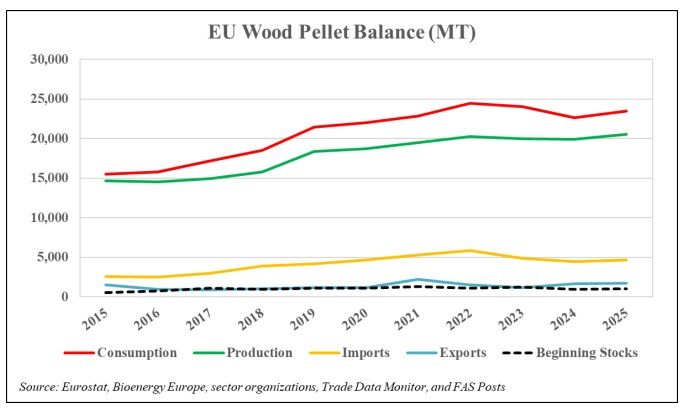




 Air New Zealand has unveiled Hangar 4, a state-of-the-art aircraft maintenance facility that represents one of the airline’s most significant infrastructure investments. …Designed to serve the next 50 years of aviation, the new facility positions Air New Zealand at the forefront of modern fleet maintenance as it prepares for the arrival of next-generation aircraft. At 10,000 square metres, 35 metres high and 98 metres wide, Hangar 4’s scale allows Air New Zealand engineers to service a Boeing 787-9 Dreamliner and two Airbus A320/A321s simultaneously, supported by an additional 5000 square metres of specialist workshops and engineering spaces. Hangar 4 … is the largest single-span timber arch aircraft hangar in the southern hemisphere. Timber was chosen for its lighter weight, ability to be sourced sustainably – from plantations in Nelson and Wodonga – and for its performance in a coastal environment. …Prefabricated trusses, each weighing 38 tonnes, were built in 25-metre sections, assembled on site and lifted into place…
Air New Zealand has unveiled Hangar 4, a state-of-the-art aircraft maintenance facility that represents one of the airline’s most significant infrastructure investments. …Designed to serve the next 50 years of aviation, the new facility positions Air New Zealand at the forefront of modern fleet maintenance as it prepares for the arrival of next-generation aircraft. At 10,000 square metres, 35 metres high and 98 metres wide, Hangar 4’s scale allows Air New Zealand engineers to service a Boeing 787-9 Dreamliner and two Airbus A320/A321s simultaneously, supported by an additional 5000 square metres of specialist workshops and engineering spaces. Hangar 4 … is the largest single-span timber arch aircraft hangar in the southern hemisphere. Timber was chosen for its lighter weight, ability to be sourced sustainably – from plantations in Nelson and Wodonga – and for its performance in a coastal environment. …Prefabricated trusses, each weighing 38 tonnes, were built in 25-metre sections, assembled on site and lifted into place…

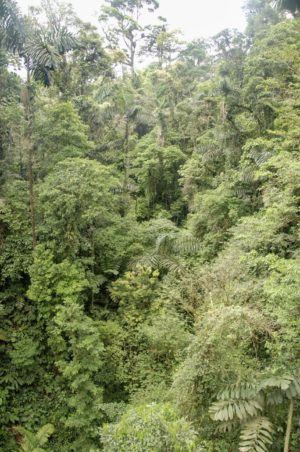 Brazil will invest $1 billion in the
Brazil will invest $1 billion in the 
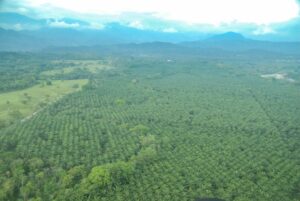 The European Commission has proposed delaying the EU’s flagship anti-deforestation law for the second year in a row as it continues its war on red tape. The rules, which would force companies to stop using commodities that have been produced on deforested land, are unpopular with many businesses who argue they impose complex regulatory burdens. Several of the EU’s trading partners have also complained about the law. …The EU’s environment commissioner Jessika Roswall, announcing the delay of the European Union Deforestation Regulation said “We need the time to combat the risk with the load of information in the IT system.” …It’s the latest in a long string of actions by the Commission since late last year to weaken or delay green rules, part of a grand push to get rid of red tape and boost the global competitiveness of European industry.
The European Commission has proposed delaying the EU’s flagship anti-deforestation law for the second year in a row as it continues its war on red tape. The rules, which would force companies to stop using commodities that have been produced on deforested land, are unpopular with many businesses who argue they impose complex regulatory burdens. Several of the EU’s trading partners have also complained about the law. …The EU’s environment commissioner Jessika Roswall, announcing the delay of the European Union Deforestation Regulation said “We need the time to combat the risk with the load of information in the IT system.” …It’s the latest in a long string of actions by the Commission since late last year to weaken or delay green rules, part of a grand push to get rid of red tape and boost the global competitiveness of European industry.  Increasing tree species diversity is widely suggested as a way to help forests withstand climate change – especially prolonged droughts. But a new international study led by the University of Freiburg, published in Global Change Biology, shows that simply mixing more tree species does not always boost forests’ resilience to drought. In fact, the effects of diversity on tree growth can shift from beneficial to negative as droughts drag on. Drawing on tree ring data from the world’s largest network of tree diversity experiments, researchers found that diverse forests can initially support better tree growth during single-year droughts. However, as droughts persist longer within a year or extend over consecutive years, these positive effects can turn negative depending on local conditions. In some cases, mixing tree species strengthened forest resilience; in others, it increased stress and competition for water. …Building resilient forests will thus require not just more species, but carefully selected combinations and adaptive management.
Increasing tree species diversity is widely suggested as a way to help forests withstand climate change – especially prolonged droughts. But a new international study led by the University of Freiburg, published in Global Change Biology, shows that simply mixing more tree species does not always boost forests’ resilience to drought. In fact, the effects of diversity on tree growth can shift from beneficial to negative as droughts drag on. Drawing on tree ring data from the world’s largest network of tree diversity experiments, researchers found that diverse forests can initially support better tree growth during single-year droughts. However, as droughts persist longer within a year or extend over consecutive years, these positive effects can turn negative depending on local conditions. In some cases, mixing tree species strengthened forest resilience; in others, it increased stress and competition for water. …Building resilient forests will thus require not just more species, but carefully selected combinations and adaptive management. 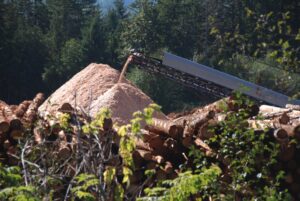 The European Commission has announced dates for virtual training sessions on the EUDR Information System, open to all interested parties. These sessions provide guidance on submitting due diligence statements under the European Union Deforestation Regulation (EUDR). While these sessions are available to all, WPAC anticipates that most of our members will meet their EUDR obligations through the Sustainable Biomass Program (SBP) system, which we helped to develop. EUDR establishes robust requirements for traceability, due diligence, and risk mitigation. SBP has developed a voluntary EUDR module integrated into its Data Transfer System (DTS), helping Certificate Holders prepare now for compliance ahead of the December 2025 implementation deadline. …Learn more about
The European Commission has announced dates for virtual training sessions on the EUDR Information System, open to all interested parties. These sessions provide guidance on submitting due diligence statements under the European Union Deforestation Regulation (EUDR). While these sessions are available to all, WPAC anticipates that most of our members will meet their EUDR obligations through the Sustainable Biomass Program (SBP) system, which we helped to develop. EUDR establishes robust requirements for traceability, due diligence, and risk mitigation. SBP has developed a voluntary EUDR module integrated into its Data Transfer System (DTS), helping Certificate Holders prepare now for compliance ahead of the December 2025 implementation deadline. …Learn more about  Austria’s softwood sector may face a production decline of up to 10% if the EU Deforestation Regulation (EUDR) takes effect in its current form at the end of the year. The regulation requires full traceability of wood products across the entire supply chain, which industry representatives say is unworkable according to Markus Schmölzer of the Austrian Sawmill Association. Although the sector expects a 2% production increase in 2025, the EUDR poses a direct threat to the entire wood value chain. A decline in softwood production would affect manufacturers of building components, furniture, panel boards, paper, and pellet products, especially during winter months. …The Austrian industry urges the EU to either suspend the regulation entirely or revise it through an “Omnibus” legislative package aimed at reducing bureaucracy. …While supporting the goal of halting global deforestation, the sector proposes targeted monitoring for high-risk regions and exemptions for low-risk countries such as Austria.
Austria’s softwood sector may face a production decline of up to 10% if the EU Deforestation Regulation (EUDR) takes effect in its current form at the end of the year. The regulation requires full traceability of wood products across the entire supply chain, which industry representatives say is unworkable according to Markus Schmölzer of the Austrian Sawmill Association. Although the sector expects a 2% production increase in 2025, the EUDR poses a direct threat to the entire wood value chain. A decline in softwood production would affect manufacturers of building components, furniture, panel boards, paper, and pellet products, especially during winter months. …The Austrian industry urges the EU to either suspend the regulation entirely or revise it through an “Omnibus” legislative package aimed at reducing bureaucracy. …While supporting the goal of halting global deforestation, the sector proposes targeted monitoring for high-risk regions and exemptions for low-risk countries such as Austria. The European Union Deforestation Regulation (EUDR), one of the world’s most comprehensive legislations to curb tropical deforestation, will take effect at the end of December 2025. Since its adoption in 2023, debates over its implementation and effectiveness have been loud and persistent. Some claim the requirements are unclear or impossible to meet, especially for smallholders, while others fear the regulation will disrupt trade or place heavy burdens on businesses. …Despite the challenges, governments, companies and smallholders worldwide are showing that EUDR compliance is not only possible — it is already underway. Building on our previous analysis of why the EUDR is a necessary regulation to tackle deforestation linked to commodity supply chains, this article focuses on the practicality of compliance and highlights concrete steps being taken to prepare. …Guidance from EU national enforcement authorities, such as the Netherlands’ report, show that compliance with the EUDR is not rocket science.
The European Union Deforestation Regulation (EUDR), one of the world’s most comprehensive legislations to curb tropical deforestation, will take effect at the end of December 2025. Since its adoption in 2023, debates over its implementation and effectiveness have been loud and persistent. Some claim the requirements are unclear or impossible to meet, especially for smallholders, while others fear the regulation will disrupt trade or place heavy burdens on businesses. …Despite the challenges, governments, companies and smallholders worldwide are showing that EUDR compliance is not only possible — it is already underway. Building on our previous analysis of why the EUDR is a necessary regulation to tackle deforestation linked to commodity supply chains, this article focuses on the practicality of compliance and highlights concrete steps being taken to prepare. …Guidance from EU national enforcement authorities, such as the Netherlands’ report, show that compliance with the EUDR is not rocket science. 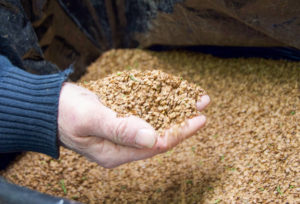 The UK’s largest and most advanced seed centre has opened in Cheshire. The store near Delamere Forest will process four tonnes of seeds every year, which Forestry England said was enough to grow millions of trees for decades to come. It added the centre was “a significant milestone in protecting the future resilience of our forests”. Forestry Minister Mary Creagh said the building was “nationally significant” because it was “part of our climate resilience”. Creagh added: “We are the largest wood importer in the world, and in a climate-constrained future we are going to have to grow more of our own.” The centre, funded through the Nature for Climate Fund and Forestry England, aims to provide seeds to grow climate-adapted trees. …Tristram Hilborn, chief operating officer of Forestry England, said: “What we need to consider for 100 a years’ time is the sort of trees that will thrive in that sort of climate.”
The UK’s largest and most advanced seed centre has opened in Cheshire. The store near Delamere Forest will process four tonnes of seeds every year, which Forestry England said was enough to grow millions of trees for decades to come. It added the centre was “a significant milestone in protecting the future resilience of our forests”. Forestry Minister Mary Creagh said the building was “nationally significant” because it was “part of our climate resilience”. Creagh added: “We are the largest wood importer in the world, and in a climate-constrained future we are going to have to grow more of our own.” The centre, funded through the Nature for Climate Fund and Forestry England, aims to provide seeds to grow climate-adapted trees. …Tristram Hilborn, chief operating officer of Forestry England, said: “What we need to consider for 100 a years’ time is the sort of trees that will thrive in that sort of climate.”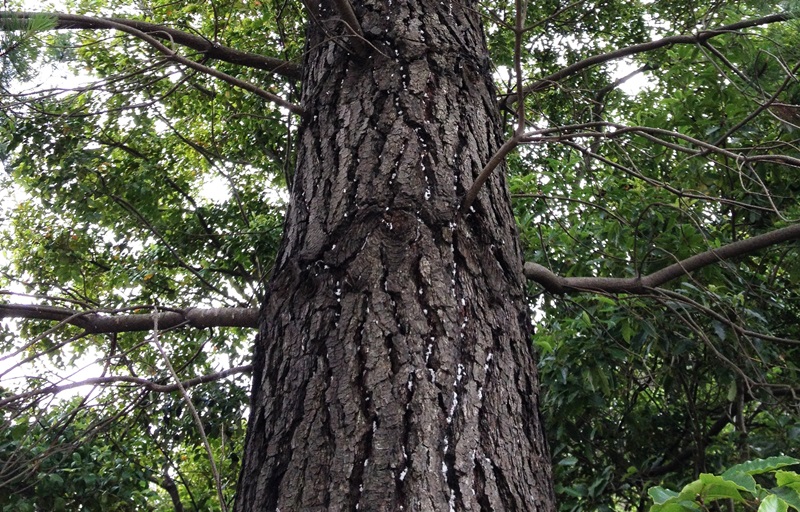


 Planet-warming emissions from a group of the world’s largest fossil fuel producers have significantly ramped up the intensity of heat waves, a new study suggests, one of the first peer-reviewed papers to link dozens of climate-fuelled weather events to specific companies. The study led by a group of Swiss-based climate scientists says about one-quarter of the 213 recent heat waves they studied, including the 2021 B.C. heat dome, would have been virtually impossible without human-caused climate change. It says emissions from some individual companies, including relatively smaller ones and some of Canada’s oil-and-gas producers, would have been enough to make otherwise impossible heat waves statistically possible. …The researchers linked emissions from the group of cement and fossil-fuel producers to about half the increase in heat wave intensity connected to human-caused climate change.
Planet-warming emissions from a group of the world’s largest fossil fuel producers have significantly ramped up the intensity of heat waves, a new study suggests, one of the first peer-reviewed papers to link dozens of climate-fuelled weather events to specific companies. The study led by a group of Swiss-based climate scientists says about one-quarter of the 213 recent heat waves they studied, including the 2021 B.C. heat dome, would have been virtually impossible without human-caused climate change. It says emissions from some individual companies, including relatively smaller ones and some of Canada’s oil-and-gas producers, would have been enough to make otherwise impossible heat waves statistically possible. …The researchers linked emissions from the group of cement and fossil-fuel producers to about half the increase in heat wave intensity connected to human-caused climate change. …Sweden, like Canada, sits atop vast boreal forests — part of the same great green belt circling the Northern Hemisphere. These forests act as planetary lungs, storing more carbon than even the Amazon. But the Swedish government’s latest forestry inquiry, En robust skogspolitik för aktivt skogsbruk, is heading in a troubling direction: grow more trees, cut them faster, and burn or export more biomass in the name of “green energy.” It sounds like a climate solution. But here’s the problem: forests are not factories. Most of the carbon in a boreal forest isn’t stored in the trees at all. It’s locked underground — in roots, fungi, humus, and delicate microbial networks built up over thousands of years. When forestry is intensified — shorter harvest cycles, heavier machines, wider clear-cuts — that underground bank of carbon is steadily drained. The trees grow back, yes, but the soil can take centuries to recover, if it recovers at all.
…Sweden, like Canada, sits atop vast boreal forests — part of the same great green belt circling the Northern Hemisphere. These forests act as planetary lungs, storing more carbon than even the Amazon. But the Swedish government’s latest forestry inquiry, En robust skogspolitik för aktivt skogsbruk, is heading in a troubling direction: grow more trees, cut them faster, and burn or export more biomass in the name of “green energy.” It sounds like a climate solution. But here’s the problem: forests are not factories. Most of the carbon in a boreal forest isn’t stored in the trees at all. It’s locked underground — in roots, fungi, humus, and delicate microbial networks built up over thousands of years. When forestry is intensified — shorter harvest cycles, heavier machines, wider clear-cuts — that underground bank of carbon is steadily drained. The trees grow back, yes, but the soil can take centuries to recover, if it recovers at all. EUROPE — Climate change has large economic costs for society. An important effect is the disruption of natural resource supply by climate-mediated disturbances such as wildfires, pest outbreaks and storms. Here we show that disturbance-induced losses for Europe’s timber-based forestry could increase from the current €115 billion to €247 billion under severe climate change. This would diminish the timber value of Europe’s forests by up to 42% and reduce the current gross value added of the forestry sector by up to 15%. Central Europe emerges as a continental hotspot of disturbance costs, with projected future costs of up to €19,885 per hectare. Simultaneous climate-related increases in forest productivity could offset future economic losses from disturbances in Northern and Central Europe but not in Southern Europe. We find high disturbance-related cost of unmitigated warming, highlighting that climate change adaptation in forestry is not only an ecological but also an economic imperative.
EUROPE — Climate change has large economic costs for society. An important effect is the disruption of natural resource supply by climate-mediated disturbances such as wildfires, pest outbreaks and storms. Here we show that disturbance-induced losses for Europe’s timber-based forestry could increase from the current €115 billion to €247 billion under severe climate change. This would diminish the timber value of Europe’s forests by up to 42% and reduce the current gross value added of the forestry sector by up to 15%. Central Europe emerges as a continental hotspot of disturbance costs, with projected future costs of up to €19,885 per hectare. Simultaneous climate-related increases in forest productivity could offset future economic losses from disturbances in Northern and Central Europe but not in Southern Europe. We find high disturbance-related cost of unmitigated warming, highlighting that climate change adaptation in forestry is not only an ecological but also an economic imperative.
 In the Northern Hemisphere, the more than twofold difference between the atmospheric inversion and remote sensing–derived estimate of the net land carbon sink is an unresolved puzzle that challenges our fundamental understanding of the global carbon cycle. We provide several lines of evidence that much of this discrepancy can be resolved by a weak net land carbon sink that is distributed mainly in the Northern Hemisphere, together with a relatively small reduction in the magnitude of fossil fuel emissions and a small increase in ocean uptake. …A strong land carbon sink, as identified in past research, has often been used to support the potential of nature-based climate solutions in meeting climate stabilization targets. However, if the weak land sink hypothesis is correct, then the role of CO2 fertilization in enhancing forest carbon stocks might be overestimated. At the same time, projections of carbon accumulation in reforestation and afforestation projects may be optimistic too.
In the Northern Hemisphere, the more than twofold difference between the atmospheric inversion and remote sensing–derived estimate of the net land carbon sink is an unresolved puzzle that challenges our fundamental understanding of the global carbon cycle. We provide several lines of evidence that much of this discrepancy can be resolved by a weak net land carbon sink that is distributed mainly in the Northern Hemisphere, together with a relatively small reduction in the magnitude of fossil fuel emissions and a small increase in ocean uptake. …A strong land carbon sink, as identified in past research, has often been used to support the potential of nature-based climate solutions in meeting climate stabilization targets. However, if the weak land sink hypothesis is correct, then the role of CO2 fertilization in enhancing forest carbon stocks might be overestimated. At the same time, projections of carbon accumulation in reforestation and afforestation projects may be optimistic too. 
